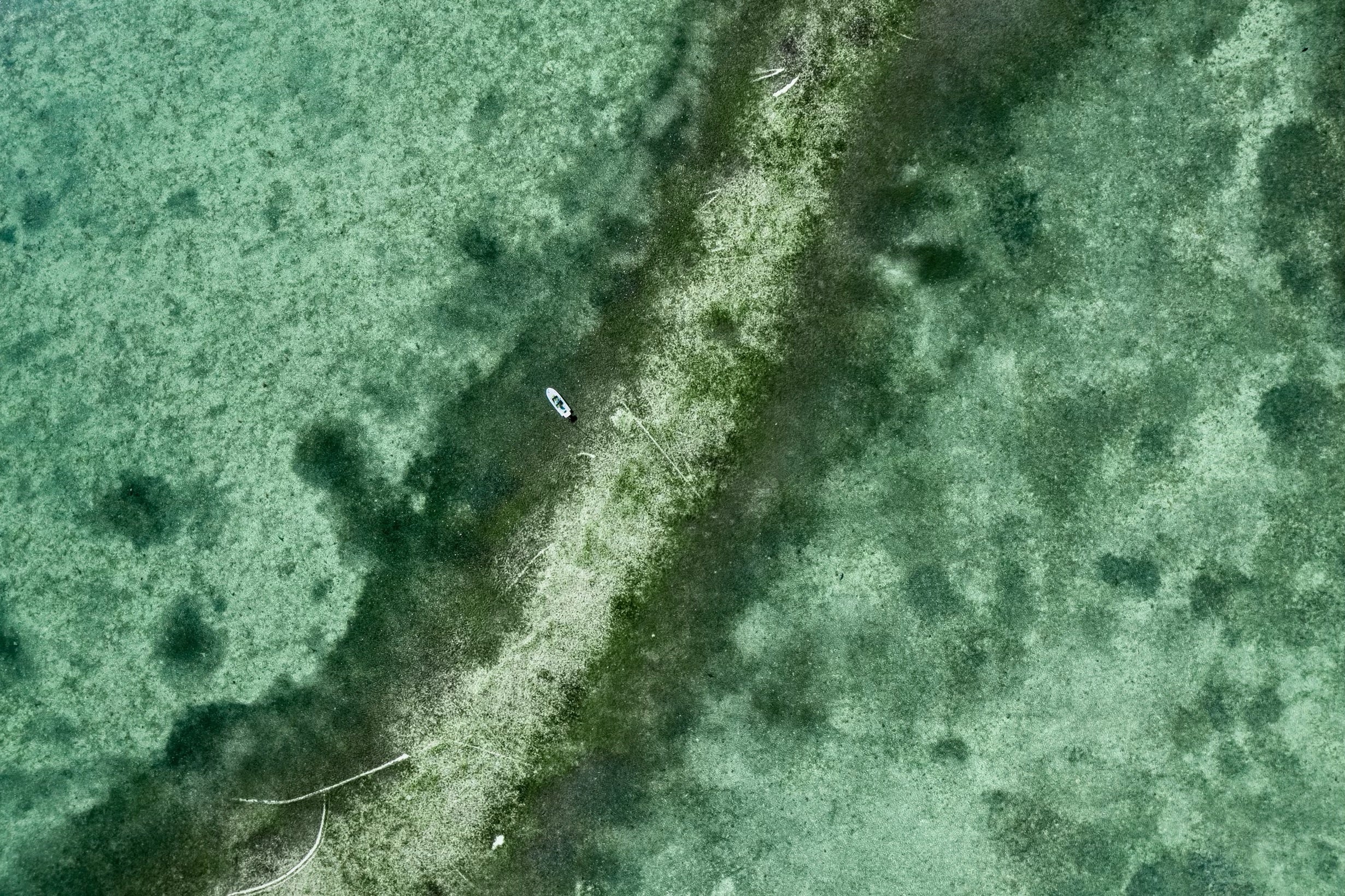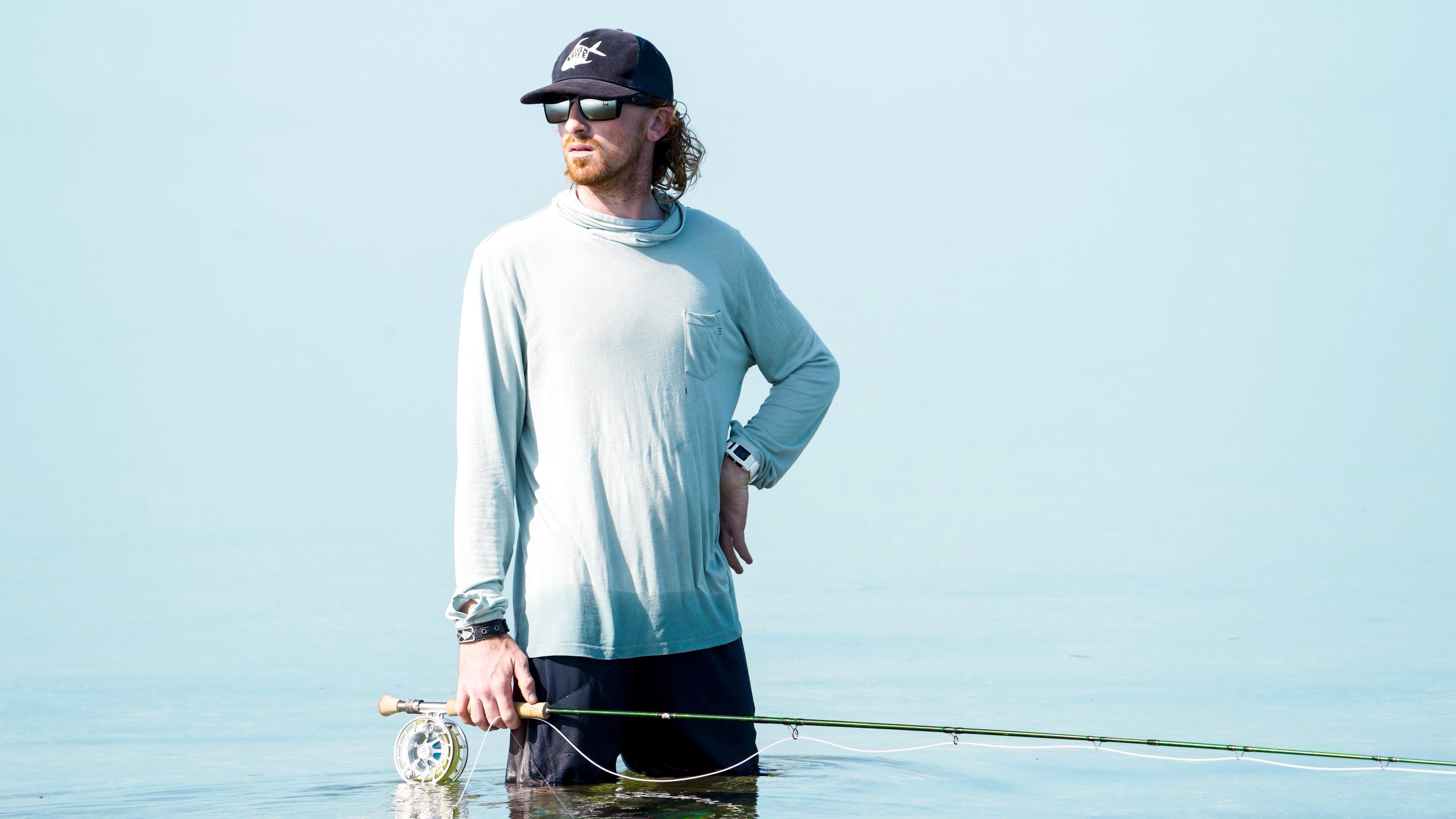
The mark of a well designed fly rod is one that is a precise balance between power and delicacy, two sides of one personality that the Winston Saltwater Air wears quite well. Ranging from 6-12 wt, the Saltwater Air is a rod with a knack for picking up 40-50 feet of fly line and smoothly transitioning its energy from a pick up to a placement right back down in front of a fish. My personal favorite rod in the line of rods is the 9wt, for its ability to present flies to permit in high pressure situations. On slicked out days when I need to switch from a deep water permit fly to a lighter fly, the rod handles permit fishing’s demand for quick situational change well. Even the occasional night time baby tarpon mission is no problem for the rod, as it acts as my go-to all around setup, paired perfectly with RIO’s 9wt Elite Permit line.

A slow-loading and immensely sensitive rod, the 9wt Saltwater Air is an exceptional choice for the permit angler with a deliberate and ‘process-oriented’ casting stroke. In layman’s terms, the rod has a slow action, and can be very beneficial for a caster who throws a long loading loop in situations with long leaders and heavy flies to spooky fish.

Some trout anglers who come down to the flats for a week of fishing have the idea in their mind that they need a fast action rod to cut through immense tropical breezes. Depending on your casting style, this could not be further from the truth. If you are a trout angler who likes the traditional action of a Winston, you should absolutely stick with it, because you have grown accustomed to that action. The learning curve of changing from what you are used to can cost you a large portion of your trip, because you are trying to recalibrate your casting stroke to fit the tendencies of the new gear that you are not used to using. Casting in the wind is a part of every day fishing in the Keys, as it is in many destination flats fisheries, so having a rod with an action you are comfortable with is important and essential.
In one particular instance, I put the Saltwater Air 9wt through its paces with the grandfather of spooky fish, the atlantic permit in the Florida Keys. I was fishing with my good friend Ryan Phinney, who is a guide out of Big Pine Key, and we were approaching a tailing permit, from the downwind position. Often, this is a highly difficult shot for an angler because they lose track of exactly where their fly is in the water column in relation to the fish, considering the current and the wind picking up the fly and taking it away from the feeding zone. Having very little idea where the fly was, I read the tailing body language of the fish, and sent a cast farther away from it than maybe I initially wanted to. The sight of a tailing permit makes any sane person freeze up, even if just a little. Ryan urged me to pick up line and hit the fish on the head, as its head was in the coral, feeding actively on what was likely crabs or other forage. With one even up-stroke of my rod tip, I was able to relieve line tension off the water and propel my cast into a quiet, even backcast, furthermore transferring that energy into a delicate forward cast that landed quietly, although it likely did not need to (this fish was really feeding).
I was able to place the fly exactly where it needed to be – right on top of the fish. The tail kept waving, and Phinney and I, the boat, and unfortunately the fly, were completely undetected by the permit. I stripped line in quickly, not as a retrieve, but more as a way to get another shot at the fish and remove the belly out of my line. I ended up coaxing the fish to follow, albeit accidentally, and we both suspected that somewhere in the exchange, the fish ate the fly and spat it, completely undetected, as evident to his reaction – a speedy getaway somewhere to another zip code.

It’s true, the end of this story does not end in me holding a permit. Most anglers would see this as a failure, a blown shot, but more importantly, I look at that scenario and recognize that the cast was exactly where it needed to be, apparently, and everything else is up to the good will of the permit gods. Even blind squirrels like myself find a nut, so I can only look forward to the next opportunity to capitalize on a shot like that. The good and the bad in fly fishing even out in the end, I’m convinced, and with more hard work, more permit will come to hand. It is that simple.
Now, back to the rod! Upon picking up the Saltwater Air for the first time, one of my main suspicions was that they were not fast enough to keep up with the fishing down here. Absolutely, like many other skeptics of Winston, I had my own preconceived notions about the rod in that pretty green tube!
“Isn’t Winston mostly, like, for trout?”
If I had a dollar for every time I heard that! Before throwing the Saltwater Air, I knew they would work throwing big striper flies up north, and certainly for other predatory species, but I was not sure if it was more of a casting rod, as opposed to a fishing rod. I have tested out the line of rods shark fishing, and they withstand large fish taking powerful runs, which is the name of the game! Being able to cast in the wind, have backbone in a fight, and still present flies with delicacy is something all saltwater rods aspire to achieve, and this rod covers all those bases.

The rod action, or how fast or slow a rod casts, is an issue with high subjectivity, and likely has very little to do with the way the rod loads, but more so with the one loading the rod (ie the caster). However, the entire line of Saltwater Air fly rods were designed for delicacy, so keeping that in mind, someone who knowingly likes a fast action rod will take a longer time getting used to the action. If you are a Winston believer or skeptic, you owe it to yourself to come by the shop and cast one on the pond!

Read more from Joe Dahut at Seven Mile Fly Shop at www.https://sevenmileflyshop.com/.


The salt air 6 weight is a marvelous rod for fishing surf applications in Southern California. It also serves as a wicked streamer rod on the snake River! Smooth and progressive, classic Winston feel. It’s awesome!
My favorite is the 6-weight as well. Feels just right for me.